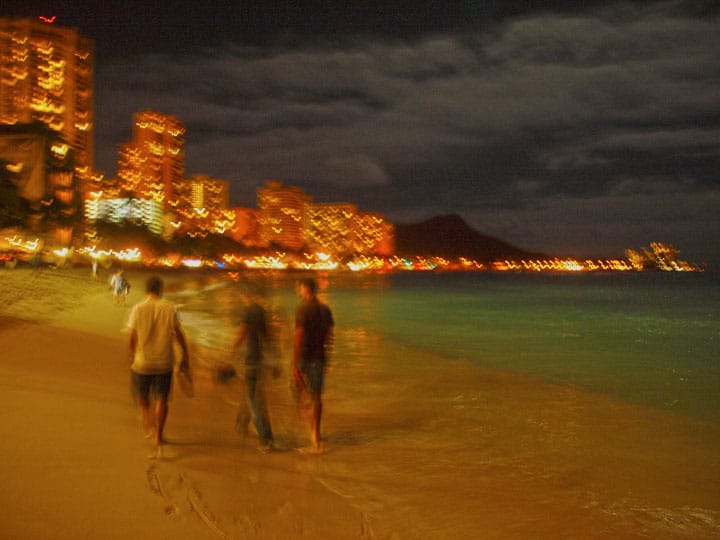Tom Walker says he was not initially a big fan of the Jersey Shore. Having spent much of his youth on the beaches of northern California, the Jersey Shore was different. He really wasn’t familiar with the “vocabulary” of the landscape here. But slowly over the years, visiting Cape May, Asbury Park, Sandy Hook and other points along the Shore, he came around. “For me the Jersey Shore has a very quiet gentleness to it. I think of broad beaches, long weathered boardwalks, the slow rolling thunder of waves crashing on the shore. The light is very soft there.”
During our conversation, there is a sound of a steady breeze in the background, as Hawaii’s trade winds dance across his porch. Tom currently spends part of his time in Hawaii, a place he describes as a sort of “paradise”, but also hops back and forth to New York. In September, Walker will give a talk entitled “Re-Drawing Paradise” that will emphasize through visuals the need to recognize the environments we live in and identify their uniqueness and value.In this way Walker notes, we make emotional connections to the world around us—we establish meaning, we each create our own paradise. This connects us to our past and present, which in turn allows us to better envision our future.
In addition to his photography business, Walker uses his visual acuity working in the media, branding, and advertising industries—all of which adds color to his language. “I approach things from a brand perspective,” he points out. Tom describes living in Hawaii and New York as visually satisfying experiences. Hawaii is a place that immediately conjures up rich imagery Walker notes, just as New York City is easily imagined through streetscapes or skyscrapers. Each city or place has its own distinct character and visual vocabulary—that is its brand, Tom explains. The trick is how do you preserve and build your brand so that bit will be around for future generations?
Despite their differences – New York, Hawaii, the Jersey Shore – these places share a cult of personality. Each has a distinct feel about them that defines and differentiates. “Going back to my years in advertising, the ability to clearly present your brand as different and unique applies as much to a place as much as it does to a bar of soap. It’s what makes one place this and another that. It is not something that can be manufactured to give something a “new image”—people will see through that.” “Authentic, that’s a good word” Walker suggests. “Brands need to authentic. That only comes through truly understanding what makes your area unique. You cannot be Hawaii, you cannot be New York, you can only be the Jersey Shore. That is your unique differentiator. Recognize it. Value it. And build out from there!”
Today, just like Hawaii or New York City, the Jersey shore faces external forces that threaten its brand: encroaching development, alternate visions of the built environment, and outsized corporate influence. “We need to point out the success stories like the High Line (in New York City)… not the Starbucks on every corner,” Walker emphasizes. Preserving and building brand equity requires that “you understand what makes your area special. You can then easily connect with people who get it also,” Tom adds. In his talk, Tom hopes to leave his listeners with a better sense of the Jersey shore brand. “You’ve got to keep the local, local. That’s what makes people want to come and visit”. “You need to acknowledge it and herald it.”

